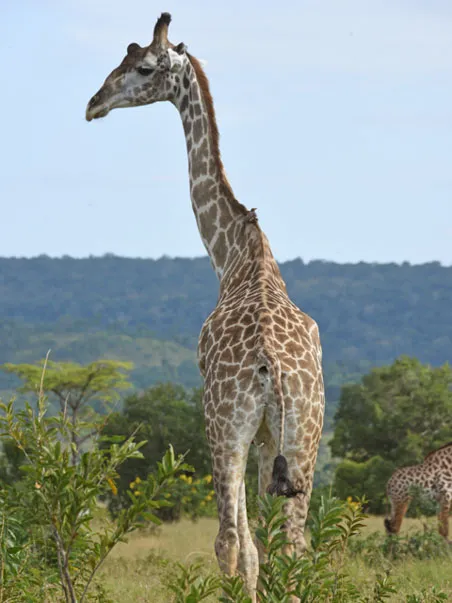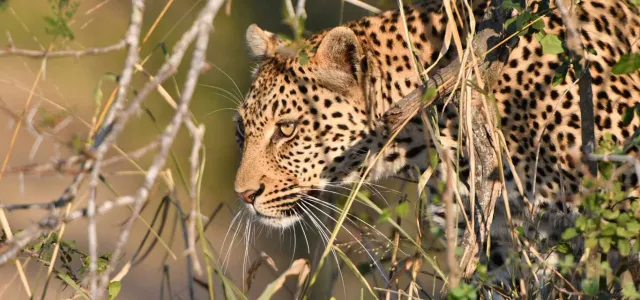Corinne Kendall, Curator for Conservation and Research for the North Carolina Zoo
The giraffe baby took a tumble as it struggled to find its footing. We had just missed seeing its six foot drop out of mom and into this world. The mother giraffe walked just a few steps away, waiting patiently for the calf to get up and join her. Even though I was in the bush in Tanzania and we were sitting half a mile away watching the scene with binoculars, I could almost smell the sweet musk of a giraffe and feel the velvety texture of their fur as I thought back to the many times I’d fed the giraffes at the North Carolina Zoo. Over the course of my career, I’ve had the unique privilege of working with animals in zoos and in the wild. In my current position as Curator of Conservation and Research at the North Carolina Zoo, I get to work alongside a dedicated team at the Zoo and in the field as we strive to save animals from extinction.
The Zoo’s conservation work spans the state of North Carolina, much of the African continent, and a few other fascinating locations like the Marianas islands and the Caribbean. Our programs focus on saving the wild counterparts of the animals we care for at the Zoo, by making use of staff expertise and the latest technology, working collaboratively with partners big and small, and through a long-term commitment to solving conservation problems. In our Saving Animals blog, you’ll learn about our diverse conservation projects. For instance, we build the capacity of rangers and protected area managers to stop the illegal wildlife trade through a tool zoo staff helped design called SMART (Spatial Monitoring and Reporting Tool). We also empower teachers to be conservation and sustainability leaders in their communities to protect the habitat of the largest population of chimpanzees in East Africa by working with 12 schools around Kibale National Park, Uganda. We give gopher frogs a fighting chance by “head-starting” – raising eggs pulled from ponds just south of the Zoo into tiny froglets before releasing them back into the wild to increase their chance of survival. In the Zoo’s backyard, we also protect and restore over 2000 acres of native habitat (not including the over 500 developed acres of the Zoo itself) to preserve North Carolina’s unique flora and fauna.
Every day is a new day as a conservation biologist for the Zoo.
Even as our travel has stopped due to the pandemic, our conservation work continues. I wake up each morning to new points on a map letting me know how our satellite tagged African White-backed vultures are doing in Tanzania – something I’ve been doing nearly every day for almost five years now. These remarkable birds let us check in on wildlife in some of the largest protected areas in Africa – we are always on the lookout for the next poisoning event, which can affect not only vultures but carnivores, like lions and hyenas as well, but more on that later.
Our Associate Curator of International Conservation, Drew Cronin, continues communicating with partners fighting poachers across southern Africa as we work to train new rangers in the use of the latest technologies, even from afar (with plans to go virtual for some upcoming trainings). Our Ugandan staff keeps tabs on teachers and students mostly via text messages these days (since Uganda is also under a lockdown) to see how their kitchen gardens are growing now that they are using new organic techniques that they were trained on last year. It’s a strange time for us all, but protection of the natural world is just as vital as ever.
As we all escape to the outdoors in these times of social distancing, I hope you’ll think about the significance of nature in all our lives. In this blog we will be sharing what the Zoo is doing to save it, because conservation is at the heart of everything we do at the North Carolina Zoo.

Giraffe in Tanzania, Africa. Photo taken on location by the Zoo's Dr. Corinne Kendall
